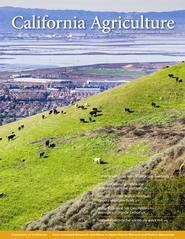All Issues

Due to ongoing climate change, widespread wildfires are predicted to increase over time in California. New research findings suggest that land managers can use strategic livestock grazing to reduce fuel loads in grasslands, which could help lower fire hazards (see Ratcliff et al., page 60). Photo credit: © Andreistanescu, Dreamstime.com.
Volume 76, Number 2





